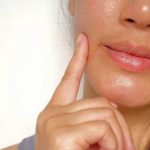Unlocking the Secret: The Significance of Skin pH

Your skin is a marvel of biological engineering, constantly working to protect you from external threats while maintaining its delicate balance. At the heart of this equilibrium lies its pH level, a critical factor influencing its health and vitality.
pH Primer: The Science Behind Skin’s pH Balance
pH, or “potential of hydrogen,” measures how acidic or alkaline a substance is, with values ranging from 0 to 14. The skin’s pH typically falls within a slightly acidic range of 4.5 to 5.5. This acidity is maintained by the acid mantle, a thin film of oils, sweat, and dead skin cells that act as a natural barrier.
The acid mantle serves several crucial functions:
- Defense Mechanism: A slightly acidic pH creates an inhospitable environment for harmful microorganisms, such as bacteria and fungi, helping to prevent infections and skin conditions.
- Moisture Retention: The acid mantle seals in moisture, preventing dehydration and maintaining optimal skin hydration levels.
- Barrier Protection: By maintaining the skin’s pH balance, the acid mantle helps reinforce its barrier function, protecting it from external aggressors like pollution, UV radiation, and harsh chemicals.
The pH Puzzle: Effects of pH Imbalance on Skin
When the skin’s pH becomes disrupted, whether due to environmental factors, skin care products, or internal imbalances, it can lead to a cascade of negative effects:
Dryness and Sensitivity
An increased pH can disrupt the acid mantle, leading to dryness, irritation, and heightened sensitivity. This can manifest as redness, itching, or a feeling of tightness in the skin.
Acne and Breakouts
A disrupted pH balance can create an environment conducive to acne-causing bacteria, leading to breakouts and blemishes. Individuals prone to acne may experience worsening symptoms when the skin’s pH is out of balance.
Premature Aging
A shift towards a more alkaline pH can compromise the skin’s barrier function, making it more susceptible to environmental damage and premature aging. Fine lines, wrinkles, and a loss of elasticity may become more pronounced over time.
Imbalanced Microbiome
The skin’s microbiome, composed of beneficial bacteria, fungi, and other microorganisms, thrives in an acidic environment. Disrupting the skin’s pH can alter the microbiome’s composition, potentially leading to dysbiosis and skin disorders.





























 Discover Beauty From Within
Discover Beauty From Within